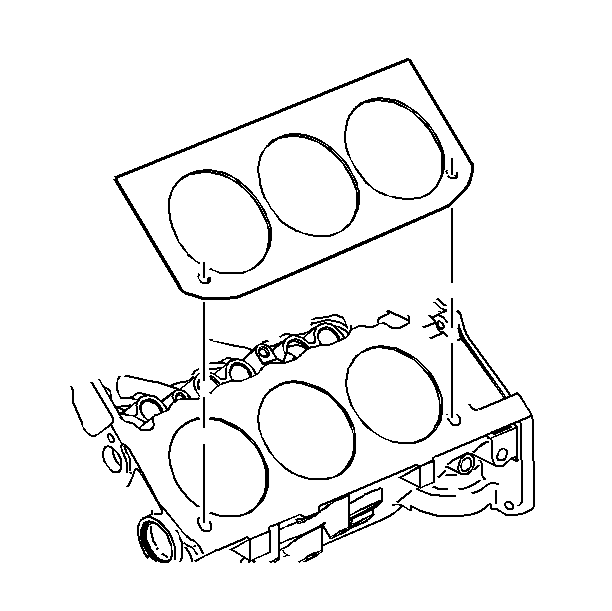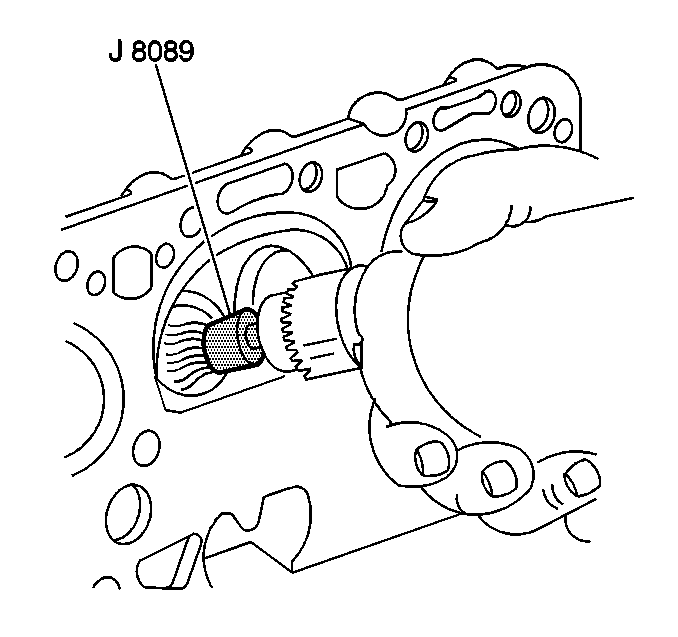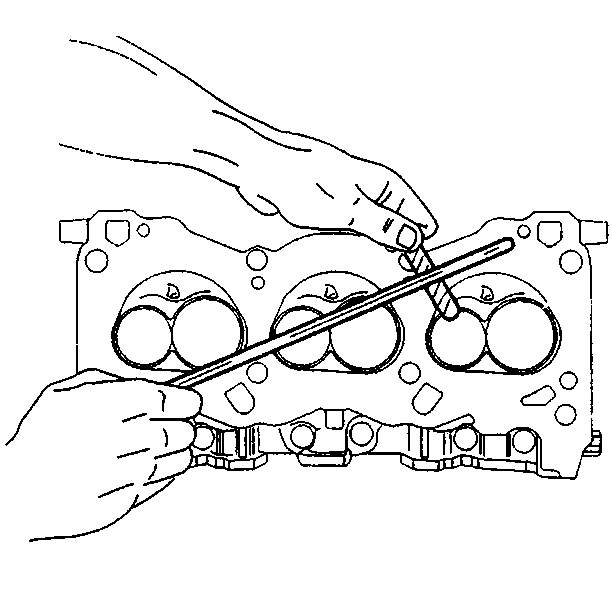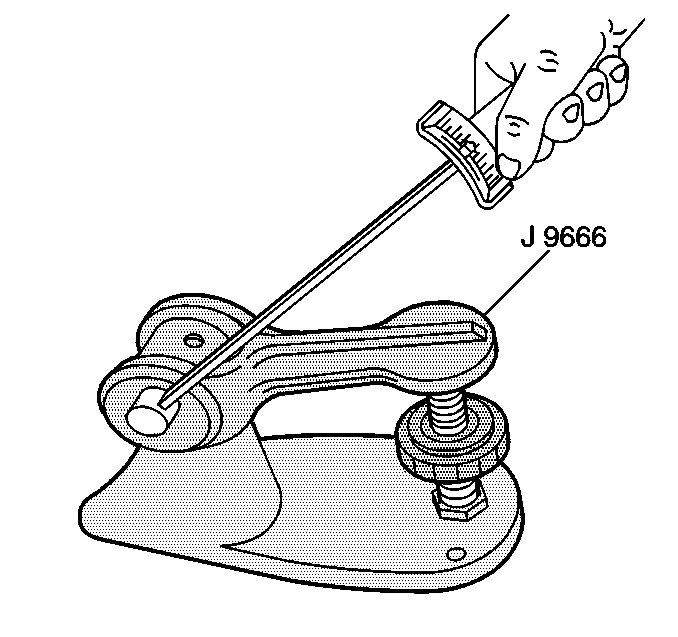Tools Required
| • | J 8089 Carbon Removing Brush |

- Inspect the cylinder head gasket and
the mating surfaces. Inspect for leaks, corrosion, and blowby.
- If the gasket failed, determine the cause. The following conditions
may cause gasket failure:
| • | A loose or warped cylinder head |
| • | Missing, off location, or not fully seated dowel pins |
| • | Low torque on the cylinder head bolts |
| • | Cylinder head bolts with the incorrect length |
| • | A warped engine block surface |
| • | Excessive intake manifold torque |
| • | Cracked engine block threaded holes |
Caution: Refer to Safety Glasses Caution in the Preface section.

Important: Do not scuff the chamber.
- Use the
J 8089 in order to
remove the carbon from the combustion chambers.
- Clean the following components:
| • | Do not use a motorized brush
on any gasket sealing surface. |
| • | Valve stems and heads on a buffing wheel |
| • | Remove all dirt, debris, or
threadlocking material from the bolt holes. |

- Inspect the cylinder head mating surfaces
for flatness. Recondition the cylinder head mating surface, if necessary,
by milling. Replace the cylinder head if you must remove more than
0.25 mm (0.010 in).
- Inspect the cylinder head for cracks.
- Inspect the cylinder head deck for corrosion. Do not attempt to
weld the cylinder head. If the cylinder head is damaged, replace the cylinder
head.

- Inspect the valve springs for squareness.

- Use the
J 9666
in order to measure the valve spring tension.
Replace the
spring if the spring tension is not within specification.





